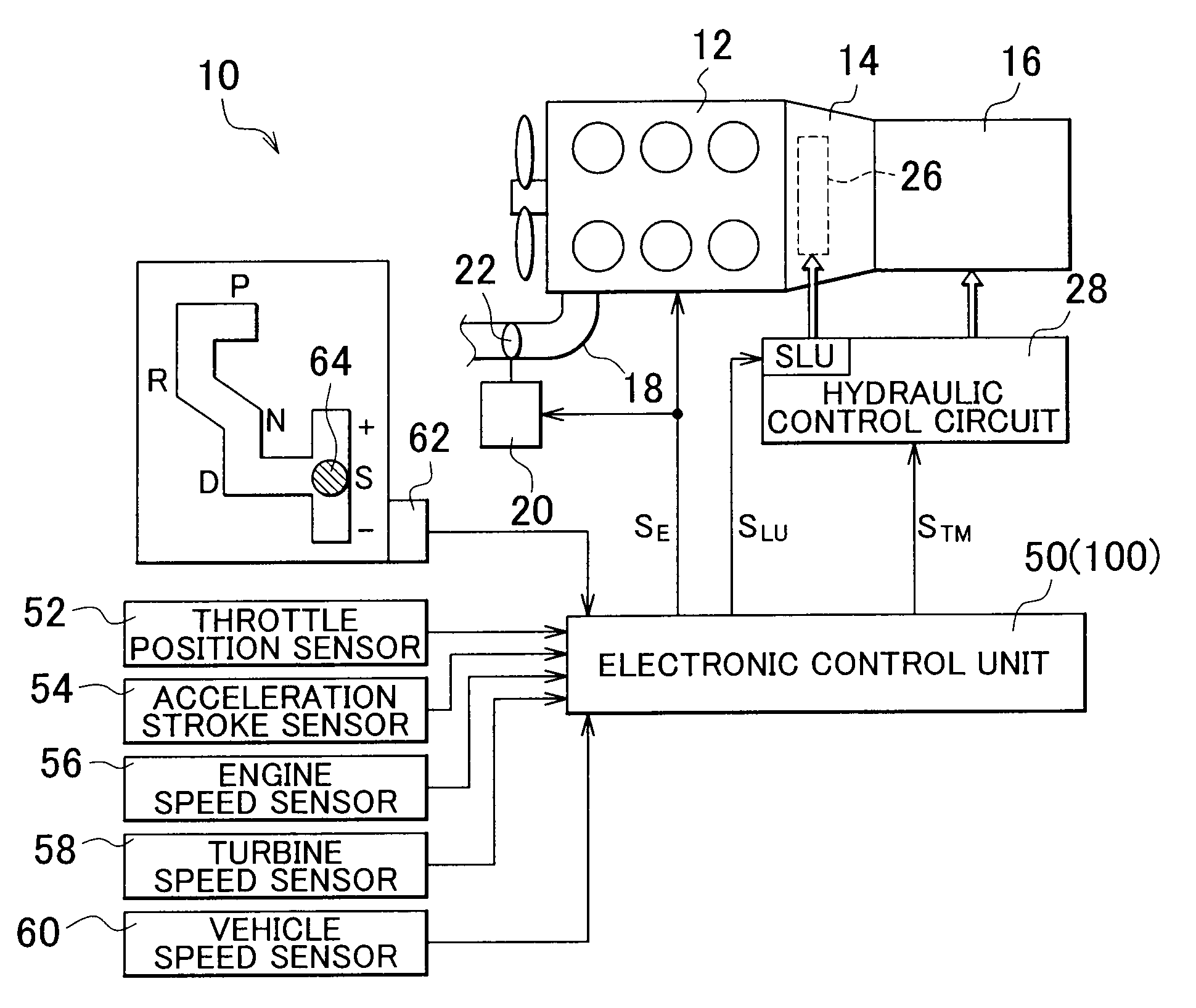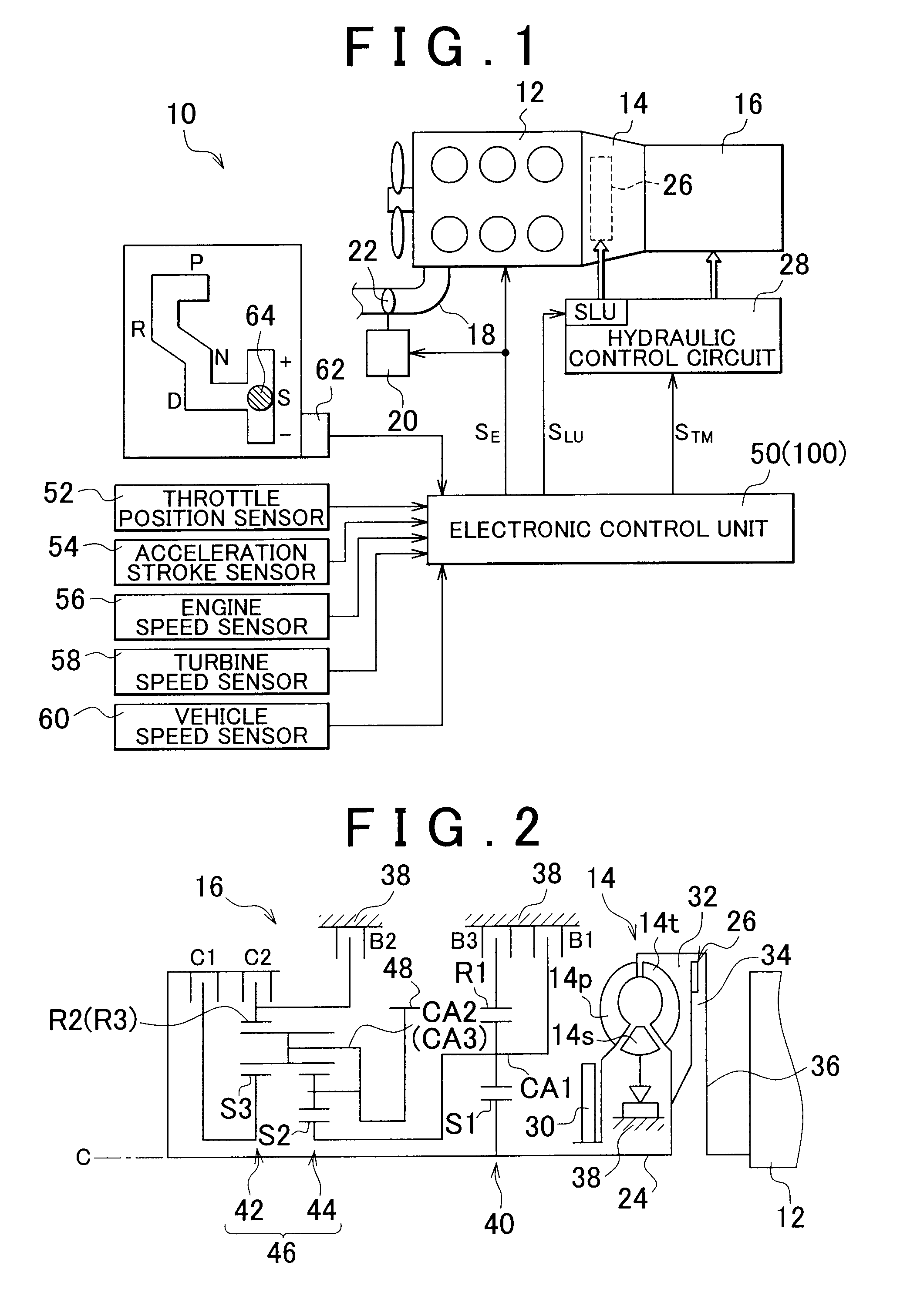Control device of vehicle drive-train system
a technology of control device and drivetrain, which is applied in the direction of electric control, gearing, machines/engines, etc., can solve the problems of inability to obtain sufficient engine brake, and inability to raise the input rotational speed. , to achieve the effect of absorbing or eliminating disadvantag
- Summary
- Abstract
- Description
- Claims
- Application Information
AI Technical Summary
Benefits of technology
Problems solved by technology
Method used
Image
Examples
first embodiment
FIG. 1 illustrates a vehicle drive-train system 10 and its control system to which the invention is applied. The vehicle drive-train system 10 shown in FIG. 1 includes an engine 12 as a driving power source for running the vehicle, a torque converter 14, and an automatic transmission 16, which are arranged in series. In operation, power generated from the engine 12 is transmitted to a pair of driving wheels, via the torque converter 14, automatic transmission 16, a differential gear unit that provides another part of the drive train and the like, in this order.
The engine 12 is an internal combustion engine, such as a gasoline engine or a diesel engine, which produces driving force through combustion of fuel injected into cylinders, for example. An electronic throttle valve 22 provided in an intake pipe 18 of the engine 12 is operated, i.e., opened and closed by a throttle actuator 20 that operates based on an electric signal (electric command) from an electronic control unit 50 that...
second embodiment
Next, another embodiment (or second embodiment) of the invention will be described. In the following description of the second embodiment, the same reference numerals as used in the first embodiment will be assigned to elements or portions common to the first and second embodiments, and description of these elements or portions will not be provided.
As shown in FIG. 4, an electronic control unit 100 of the second embodiment of the invention includes a lock-up control device 102, in addition to the shift control device 68 and the blipping control device 70 included in the electronic control unit 50 of the above-described first embodiment. The lock-up control device 102 is different from the lock-up control device 72 included in the electronic control unit 50 in the following points. Namely, the lock-up control device 102 performs standby control for filling the apply-side oil chamber 32 of the hydraulic actuator of the lock-up clutch 26 with hydraulic oil of a predetermined standby pr...
PUM
 Login to View More
Login to View More Abstract
Description
Claims
Application Information
 Login to View More
Login to View More - R&D
- Intellectual Property
- Life Sciences
- Materials
- Tech Scout
- Unparalleled Data Quality
- Higher Quality Content
- 60% Fewer Hallucinations
Browse by: Latest US Patents, China's latest patents, Technical Efficacy Thesaurus, Application Domain, Technology Topic, Popular Technical Reports.
© 2025 PatSnap. All rights reserved.Legal|Privacy policy|Modern Slavery Act Transparency Statement|Sitemap|About US| Contact US: help@patsnap.com



